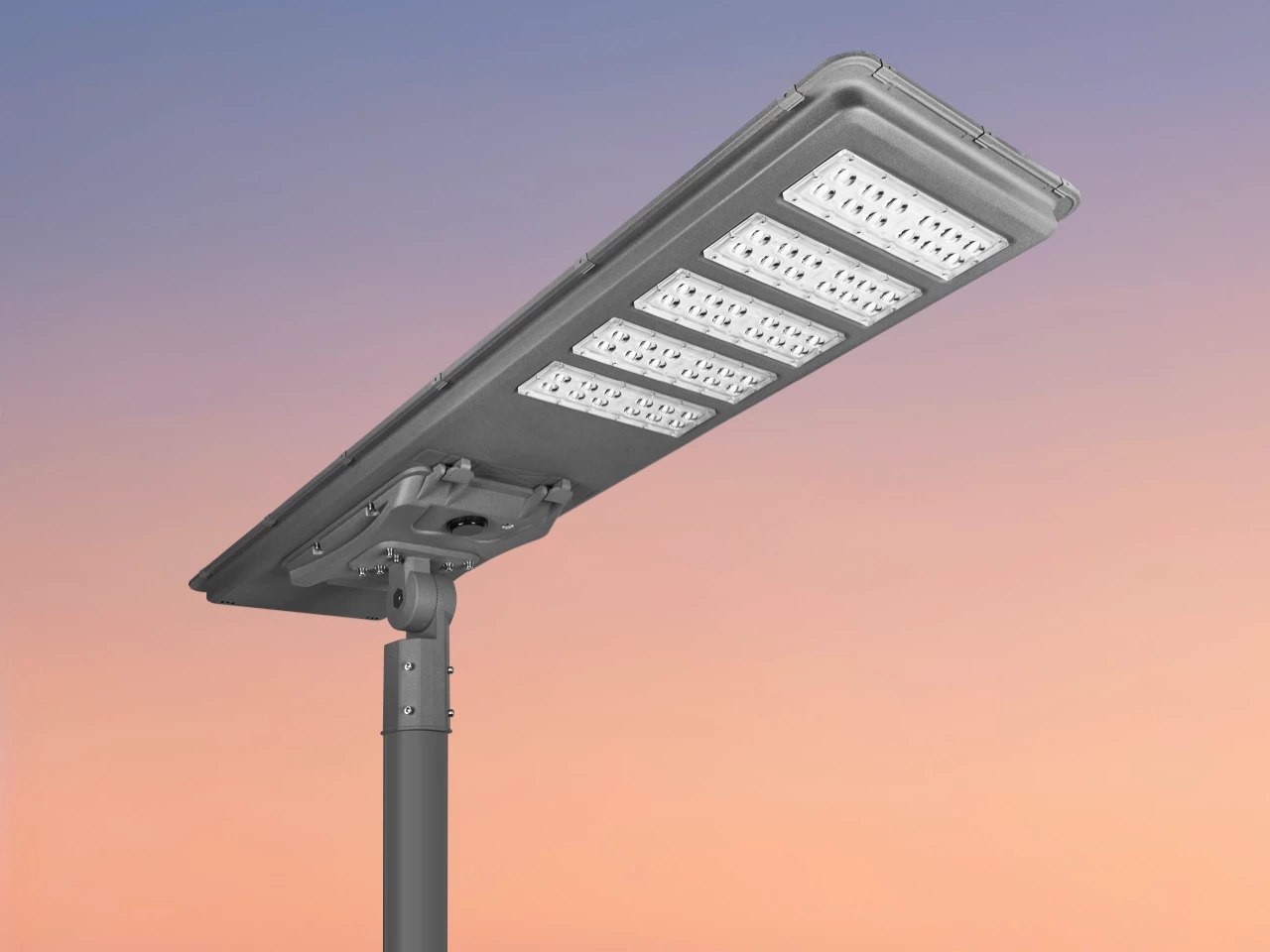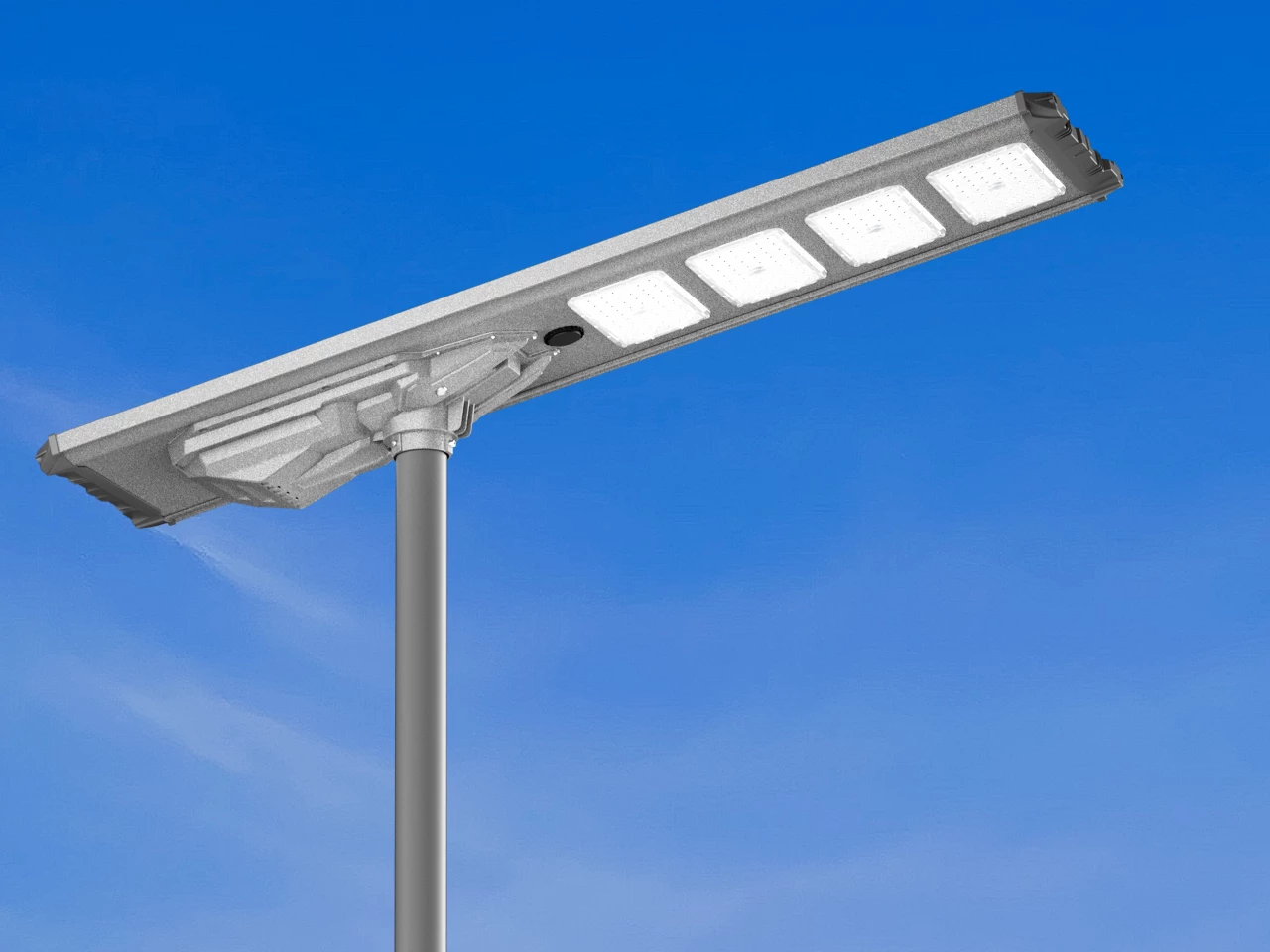What Role Does IoT Play in Solar Street Lights? Deep Dive & Market Trends
Explore how IoT transforms solar street lights—enabling smart monitoring, predictive maintenance, and efficiency. Includes historical installation trends and market data.

1. Introduction: From Standalone to Smart Infrastructure
Traditional solar street lights operate independently. With the integration of IoT, they now evolve into connected, intelligent systems forming an essential part of smart cities through remote control, real-time analytics, and automated management.
2. Installation Trends and Market Growth
- By 2022, over 23 million smart street lights were installed globally; expected to reach 63.8 million by 2027 (CAGR 22.7%).
- In 2024, the global solar street light market reached $5.69 billion, projected to exceed $23.6 billion by 2033 (CAGR 17.1%).
- LED solar lights accounted for 82% of the market share in 2024.
3. Key Roles of IoT in Solar Street Lights
a. Remote Monitoring and Firmware Management
With GSM, NB-IoT, or LoRa modules, system data like voltage, current, and status is transmitted to the cloud in real time.
b. Predictive Maintenance and Data Analytics
Sensors and historic performance data help forecast failures and schedule preventive maintenance.
c. Smart Dimming and Efficiency Optimization
Lights can be dimmed based on motion or timing profiles, reducing energy usage and extending battery life.
d. Enhanced Safety
IoT lights can integrate cameras or alarms to boost safety, especially in campuses and remote areas.
e. Centralized Management
Authorities can use dashboards to manage thousands of lights, view alerts, and generate energy reports.
4. Modern IoT Configuration in Smart Solar Lights
| Module | Description |
|---|---|
| Communication Module (GSM, NB-IoT, etc.) | Data transmission to cloud platforms |
| Smart Controller | Timing, remote updates, configuration management |
| Motion/Light Sensors | Auto on/off based on environment or movement |
| GPS Module | Precise location tracking |
| Cloud Data Platform | Dashboard, analytics, reports, and alert systems |
5. Common Applications
- Smart Cities: Unified control for city-wide lighting.
- Highways: Traffic-based adaptive brightness.
- Rural Areas: Off-grid systems with cloud-based monitoring.
- Industrial Parks: Energy reports and security integrations.
6. Challenges in Deployment
- Connectivity: Reliable GSM/NB-IoT/LoRa signal required.
- Data Security: Needs robust encryption and access control.
- Initial Cost: IoT modules increase upfront investment.
- Technical Support: Skilled operators needed for backend management.
7. Market Outlook
- Global smart street lighting market expected to reach $3B+ by 2033.
- Asia-Pacific is the fastest-growing market; China plans to invest over $367M in smart street lighting by 2025.
- Over 64 million installations anticipated by 2027.
8. Why Choose Queneng Lighting
GuangDong Queneng Lighting Technology Co., Ltd. specializes in IoT-integrated solar lighting. We provide complete hardware-to-platform solutions tailored to government, commercial, and international markets, driving the development of green smart cities globally.

💡 Frequently Asked Questions (FAQ)
1. Why integrate IoT into solar street lights?
IoT enables remote control, predictive maintenance, real-time monitoring, and intelligent dimming, enhancing system performance and reducing costs.
2. Is IoT-based solar lighting more expensive?
Yes, by about 10%–20% initially, but it offers a fast ROI within 2–3 years via reduced maintenance and energy usage.
3. Does the system require constant internet?
Most use cellular connections (4G/NB-IoT) to sync data periodically. Offline fallback ensures basic lighting still functions.
4. Is the data secure?
Yes. Systems use end-to-end encryption and certified security standards like ISO 27001 to protect transmitted data.
5. Can existing lights be upgraded?
Yes. Retrofit controllers can be added to convert legacy lights into smart, IoT-connected systems.
6. Does Queneng Lighting provide custom IoT solutions?
Absolutely. We offer configurable controllers (GSM, NB-IoT, LoRa, Zigbee) and a cloud platform with API access tailored to your needs.

Have more questions about our products or services?
The latest hot news you might like

Discover how solar panels power street lights, exploring the technology behind solar energy conversion, storage systems, and how solar-powered street lights are revolutionizing urban and rural lighting solutions.

Learn how AC Solar Hybrid Street Lights work, their advantages, disadvantages, system behavior in low-sunlight conditions, and why hybrid technology is ideal for regions with unstable sunlight.

Municipalities around the world are increasingly adopting solar-powered streetlights as part of their urban development strategies. Rising energy costs, the need for sustainable infrastructure, and government green initiatives are driving cities to switch from traditional street lighting to advanced LED solar streetlights.
Queneng Lighting provides municipalities with cost-effective, energy-efficient, and durable solar lighting solutions, ensuring safe and sustainable public spaces.

In recent years, the purchase of solar streetlights for municipalities has become a growing trend across the globe. Local governments are under pressure to reduce public expenditure, promote green energy, and create safer communities. Solar streetlights provide a reliable, cost-effective, and sustainable solution that meets these needs. Queneng Lighting, as a leading solar street lighting manufacturer, has supported multiple municipal projects worldwide with customized and energy-efficient solutions.
FAQ
Transportation and Highways
How do solar lights perform in areas with heavy traffic pollution?
Solar panels may require more frequent cleaning in high pollution areas to maintain efficiency, but the system's durability ensures reliable performance.
How long does the installation process take for a highway solar lighting system?
The installation time depends on the project size. Typically, a single solar streetlight can be installed in 1-2 hours, while larger highway projects may take several days or weeks.
Solar Street Light Luan
How are Luan solar street lights installed?
Luan solar street lights are designed for easy installation. They come with all necessary mounting hardware and can be set up without the need for electrical connections. Most installations take just a few hours and can be done with basic tools, making them a great solution for DIY projects.
Battery Performance and Testing
What is a temperature rise experiment?
OEM&ODM
Do you offer warranty and technical support?
Yes. All our products come with a 3–5 year warranty. We provide full after-sales guidance, documentation, and video support.
Battery Types and Applications
What types of rechargeable batteries are there? Which devices are they suitable for?
Features: High capacity, environmentally friendly (no mercury, lead, cadmium), overcharge protection
Application equipment: audio equipment, video recorders, mobile phones, cordless phones, emergency lights, notebook computers
Ni-MH prismatic battery
Features: High capacity, environmentally friendly, overcharge protection
Application equipment: audio equipment, video recorders, mobile phones, cordless phones, emergency lights, notebook computers
NiMH button battery
Features: High capacity, environmentally friendly, overcharge protection
Application equipment: mobile phones, cordless phones
Nickel cadmium round battery
Features: High load capacity
Application equipment: audio equipment, power tools
Nickel cadmium button battery
Features: High load capacity
Application equipment: Cordless phones, memory
Lithium Ion Battery
Features: High load capacity, high energy density
Application equipment: mobile phones, laptops, video recorders
Lead-acid batteries
Features: Cheap, easy to process, short life, heavy weight
Application equipment: ships, automobiles, miner's lamps, etc.

Queneng’s Solar Street Lights are designed to provide reliable, energy-efficient lighting for streets, parks, and other outdoor spaces.
If you would like more information about Queneng solar lighting solutions, please send us a message by filling out the form below. Our professional team will get back to you within 24 hours!
Rest assured that your privacy is important to us, and all information provided will be handled with the utmost confidentiality.
Schedule a Meeting

Book a date and time that is convenient for you and conduct the session in advance.
Have more questions about our products or services?



















